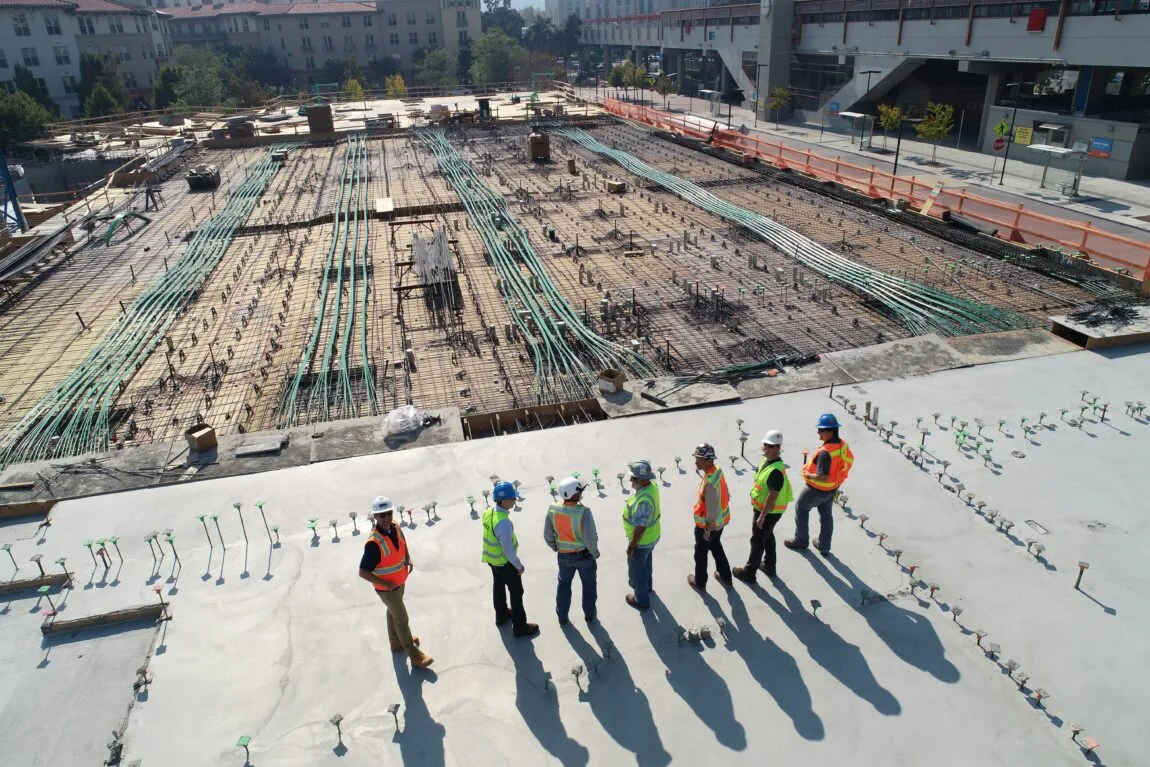In the fast-paced world of construction, ensuring a project runs smoothly relies on a solid foundation – a meticulously reviewed construction contract. This document serves as the blueprint for your entire project, outlining everything from budgets and timelines to responsibilities and dispute resolution. Failing to thoroughly understand and negotiate the terms within this contract can lead to costly surprises and project delays.
Understanding construction contracts is essential. Whether you’re a contractor, client, subcontractor, or consultant, you should understand the terms, conditions and specifications outlined within a contract. A clear grasp of these details helps maintain clarity throughout the project lifecycle, mitigates risks and avoids potential disputes.
This comprehensive guide empowers anyone involved in the construction contract process to navigate the intricacies of it.
What is a construction contract review?
A construction contract review is a thorough examination of a construction contract by a qualified professional, typically a lawyer specializing in construction law. This review acts as a safeguard for your interests throughout the project.
In essence, a construction contract review empowers you to enter the project with a clear understanding of your rights and obligations, minimizing the risk of unforeseen complications and disputes.
Here’s what such a review entails:
- Expert analysis. The lawyer meticulously reads through the contract, identifying and dissecting the key terms that define the project. Their focus is on ensuring these terms are fair and balanced for your specific role in the construction project (e.g., contractor, client, subcontractor, consultant).
- Industry knowledge. Construction lawyers bring specialized knowledge of the construction industry to the table. This expertise allows them to recognize industry-standard terms and identify any clauses that might be disadvantageous for you.
- Negotiation and redlining. Beyond analysis, the lawyer often plays an active role in contract negotiation. They’ll propose revisions (known as ‘redlines’) to the contract terms with the goal of securing the most favorable conditions for you.
- Risk mitigation. A core objective of the review is to minimize potential risks you might encounter during the project. The lawyer will identify areas where the contract could expose you to unforeseen costs or delays and work to establish clear terms that protect your interests.
- Legal compliance. The lawyer ensures the contract adheres to all relevant laws and regulations governing construction projects in your area. This safeguards against legal issues that may arise later in the project.
Which sections in the construction contract are typically reviewed?
Here are the key sections reviewed in a construction contract:
- Scope of work. This section defines the exact work that needs to be completed. A thorough review ensures it aligns with what you (contractor, subcontractor, etc.) agreed to perform. The level of detail can vary, but a well-defined scope is crucial for all parties to understand what’s included, and excluded, in the project.
- Contract amount. This section specifies the total financial compensation for the project. Meticulously check that this amount matches your proposal, including any agreed upon changes or additional work (change orders). If the scope of work changes, the contract amount and description should reflect those adjustments.
- Project schedule. The contract may outline a construction schedule or specific completion dates. If a schedule is included, pay close attention to the assigned dates for your portion of the work. Ensure you have sufficient time to secure approvals, order materials, and have everything delivered before starting work. Remember, project completion hinges on everyone adhering to the schedule, so identifying and addressing any schedule changes early is vital.
- Contract documents. These documents, such as drawings and specifications, are often referenced in the contract and form the basis for the scope of work. They are typically incorporated into the contract by being listed within it. Carefully review the list of these documents to confirm you have the correct and most recent versions. Drawings, in particular, can go through revisions during a project, so outdated versions can cause major conflicts when determining the actual scope of work.
- Dispute resolution method. This section outlines the process for resolving disagreements that might arise during the project. Many contracts stipulate arbitration, where a neutral third party settles the dispute. Other options include mediation, where a neutral party facilitates communication to reach an agreement, or even a lawsuit. It’s also important to understand who bears the cost of attorney fees associated with resolving disputes.
Pay Special Attention to These Key Clauses
A meticulously reviewed construction contract protects your interests throughout the project. Here are some key terms and clauses that warrant special attention:
- Payment clauses. Be wary of ‘pay-when-paid’ or ‘pay-if-paid’ clauses. These delay your payment by tying it to the owner’s payment to the general contractor. Ideally, negotiate for direct payment terms based on your completed work.
- Termination for convenience. This clause dictates what happens if the owner terminates the project for non-essential reasons. Often, it limits compensation to work completed or installed, leaving you with unpaid purchased materials. Negotiate to include reimbursement for these materials as well.
- No damage for delay. A clause that prevents you from recovering costs due to delays caused by others (owner or general contractor). You could be stuck absorbing expenses while waiting for them to catch up. Push for reimbursement for delays caused by parties outside your control.
- Liquidated damages. These are penalties for exceeding the project deadline. While they might seem reasonable, ensure they are imposed only on the party responsible for the delay, not passed down unfairly.
- No-lien clause. This clause asks you to waive your right to file a lien or claim against the property if you’re not paid. These clauses are often unenforceable, but it’s best to strike them entirely to preserve your legal rights.
- Subordination of lien. This clause affects the priority of your lien in case of multiple claims on the property. Being subordinated (placed behind other liens) can mean you receive little to no payment, even with a valid lien. Negotiate to avoid subordination clauses whenever possible.
Be extra cautious with these additional construction contract terms
In addition to the previously mentioned clauses, here are some additional terms that warrant careful scrutiny in a construction contract:
- Flow-down clauses. These clauses state that the terms of the main contract (between owner and general contractor) also apply to your subcontract. This essentially means you’re agreeing to abide by the terms of a contract you haven’t reviewed. Always request a copy of the prime contract for review before signing your subcontract.
- Change orders. Change orders are modifications to the original project scope. Carefully review the section outlining the change order process. This should include details on how to submit changes, deadlines for submitting notices, and the claim filing process if a change order is rejected. If the deadlines for submitting change order notices seem too short, negotiate for an extension to allow you sufficient time to gather necessary supporting information.
- Warranties. Most construction contracts require warranties on materials and labor, typically for a period of one year. Meticulously review the warranty clauses to identify any hidden warranty requirements the owner or general contractor might be requesting. These could be warranties extending for five or ten years, depending on the work involved. Ensure you fully understand the warranty duration and its implications before starting the project.
Consider AI-powered review for efficiency and risk mitigation
Construction contracts are intricate, high risk and time-consuming to review manually, and AI-powered tools can make this process faster, more efficient and more accurate.
These tools can pinpoint potential risks and ensure consistency across your contracts, acting like a tireless expert with a vast knowledge base. Imagine having a tool that analyzes contracts in a fraction of the time, saving you up to 80% on review time compared to traditional methods. This translates to faster deal closings and more time focusing on your core business.
In addition, an AI review helps mitigate legal risks by identifying potentially problematic clauses you might miss, offering peace of mind throughout the project lifecycle.
AI-powered review can be a powerful ally, protecting your interests and streamlining the review process.
You may be interested in
https://www.superlegal.ai/blog/superlegal-vs-documentcrunch/







By entering your email, you agree to our Terms & Conditions and Privacy Policy.